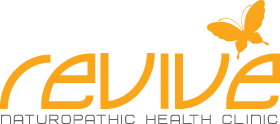What is in your kid’s snack?
September 6, 2012 · Dr.Steven Hsu, ND · Uncategorized · 0 CommentsYou’re busy, and there is an abundance of different snacks and food products on the market. As a result, it can be easy to ignore important information while shopping for your child.
It is important to take a few seconds reading labels off the box before making the right choice. Below is a crash course on food label reading.
The Not-So-Fantastic Four
1. High-Fructose Corn Syrup: This is in most carbonated drinks, juice, iced tea, and condiments, such as ketchup. Because it is cheaper than real sugar, food companies prefer to use it to drive up profit. It is high in calories and has been linked to obesity. It raises blood sugar and overall cholesterol. Long term usage leads to obesity, type II diabetes, and cardiovascular diseases.
2. Sugar substitutes:
- Aspartame (Equal, NutraSweet): This is commonly found artificial sweetener on the market. It raises blood level of aspartate and glutamate, which is toxic to neurotransmitters. Neurotransmitters are important to our brain development and function in developing child. Adverse reactions reported by the FDA include migraines, nausea, abdominal pain, fatigue, anxiety, and depression. Long-term exposure can lead to memory loss (Alzheimer’s, dementia), multiple sclerosis, and hormonal issues.
- Sucralose (Splenda): This is a synthetic sugar substitute made out of chlorine molecules. Chlorine is used in pesticides and daily cleaning agents. Sucralose and its chlorine derivative will ultimately reduce intestinal bacterial flora and stomach acid. It is also linked to anemia and male infertility. If you don’t like to drink your toilet bowl cleaner, why would you eat Splenda?
- Saccharin (Sweet’N Low): Many animal tests have found carcinogenic activity with saccharin, but it is still uncertain whether this translates into human. The FDA has reported possible side effects of saccharin including allergic reactions (rashes), diarrhea, and headache.3. Artificial flavours and colours: These are well-known food additives used worldwide for the longest time. Its side effect presents as behavioural problems in children. Synthetic dyes and chemicals increase the risk of ADD, ADHD, and allergic reactions, and not to mention, it is also a carcinogenic in several animal studies. You can find these in cereals, fruit juices, and candies.
3. Artificial flavours and colours: These are well-known food additives used worldwide for the longest time. Its side effect presents as behavioural problems in children. Synthetic dyes and chemicals increase the risk of ADD, ADHD, and allergic reactions, and not to mention, it is also a carcinogenic in several animal studies. You can find these in cereals, fruit juices, and candies.
4. Monosodium Glutamate (MSG): MSG can be found in many items such as canned soup, instant noodles, crackers, infant formula, and deli/smoked meats. MSG is used in cooking as well. It is used in your take-out Chinese food, school cafeteria, and some salad dressings. MSG is a form of cheap salt, equivalent to what the high-fructose corn syrup is to sugar. As the name indicates, it contains high sodium and high glutamic acid. As mentioned above, glutamic acid can cause neurotransmitter damage leading to brain dysfunction. MSG increases our taste buds by increasing neuronal excitement, making food taste good and triggers overeating. MSG is a contributing factor in obesity, diabetes, and cardiovascular disease. It has many alternative names which makes it harder to recognize.
Here are a few names of MSG used in food labels: yeast extract, autolyzed yeast, calcium caseinate, gelatin, glutamate, glutamic acid, hydrolyzed protein, sodium caseinate, rice syrup, and brown rice syrup.
Have fun and enjoy shopping at your local supermarket. Remember to stop and scan those food labels quickly.



